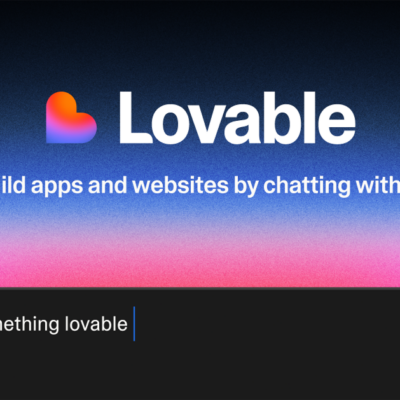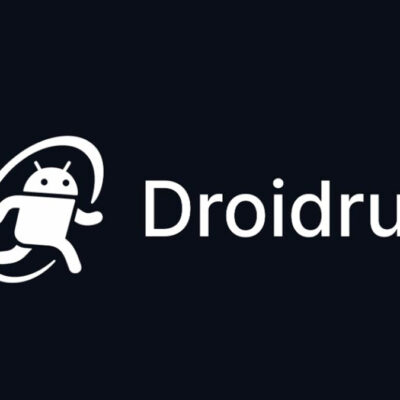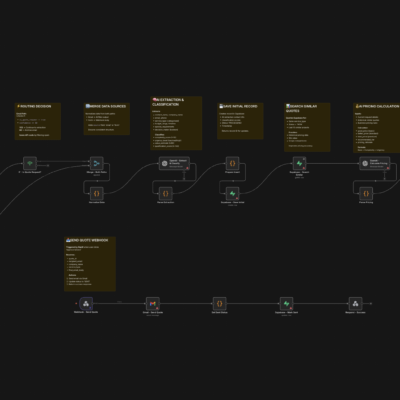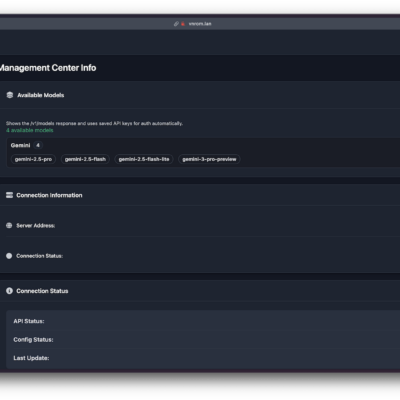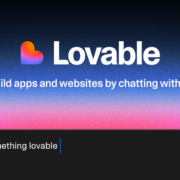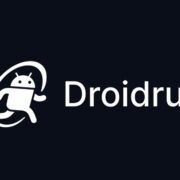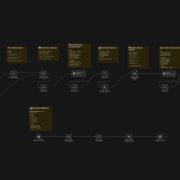The landscape of AI innovation is constantly shifting, revealing new possibilities that were once confined to science fiction. Among the most exciting advancements are AI voice agents – intelligent systems capable of natural, human-like conversations. What’s truly inspiring is seeing how quickly individuals can grasp these technologies and build incredibly sophisticated solutions.
Recently, I’ve seen firsthand an incredible example of this potential: a mental health voice agent that not only excelled in a competitive hackathon but was built by a high school student with only about six months of experience in the field. This project, which won a $5,000 prize, masterfully combined Vapi for voice interaction, n8n for backend automation, and Bolt for the frontend web application. It serves as a powerful testament to what focused effort and the right tools can achieve, proving that deep, impactful AI solutions are accessible to anyone willing to learn.
Let’s dive into the core components and innovative design that made this voice agent a winning solution, offering insights into how you can approach building your own sophisticated AI applications.
The Vision: Crafting a Personalized Mental Health Voice Agent
The primary objective behind this award-winning project was to develop a mental health web application featuring a highly personalized AI voice agent. The goal was to move beyond the limitations of generic chatbots, creating an empathetic and responsive companion that could offer meaningful support.
Beyond the Generic Bot
The core idea was simple yet profound: build an AI that doesn’t just respond, but understands and adapts to the individual user. This meant creating an agent that could:
- Offer truly tailored conversations: Addressing specific concerns and emotional states.
- Exhibit natural interaction: Sounding and feeling like a human, with appropriate pauses and tone.
- Learn and evolve: Continuously improving its understanding of the user over time.
This vision underscores a critical shift in AI development – from utility to empathy, and from static responses to dynamic, evolving relationships.
Architecting the Solution: Key Technologies and Frontend Experience
Bringing such a personalized AI voice agent to life requires a robust and interconnected tech stack. This project effectively leveraged a combination of powerful, user-friendly tools to handle everything from the user interface to complex backend logic and voice interactions.
The Core Tech Stack
- Frontend Web App (Bolt): The user-facing interface was custom-built using Bolt, providing a clean and intuitive experience for users to sign up, manage their profiles, and initiate sessions.
- Backend Automation (n8n): As the brain of the operation, n8n was used to orchestrate all the complex workflows, integrating different services and managing data flows.
- Voice Agent Hosting (Vapi): Vapi served as the primary platform for hosting the AI voice agent, handling the real-time voice synthesis, transcription, and natural language processing that makes the conversations feel so natural.
- Database & Authentication (Google Firebase): For secure user authentication and storing essential user IDs and profile data, Google Firebase was an ideal choice, offering simplicity and scalability.
- User Profile Storage (Google Sheets): Detailed user preferences and historical interaction summaries were stored in Google Sheets, providing an accessible and flexible database for n8n to interact with.
Seamless User Onboarding and Profile Creation
The initial user experience was meticulously designed to capture essential information, ensuring the AI companion could be highly personalized from the very first interaction.
- Sign-up and Verification: Users begin by signing up with their full name, email, phone number, and time zone, followed by an email verification step handled via Firebase.
- Detailed Questionnaire: After verification, users are prompted with a series of five questions. These are crucial for gathering deep insights into their current situation, what they’d like support with, and their general preferences. This initial data immediately personalizes the AI’s understanding.
- Data Storage and Personalization: The information collected during onboarding is securely stored. While Firebase handles basic authentication and user IDs, more detailed preference data is channeled through n8n into dedicated Google Sheets. This setup allows the AI to reference a rich profile, ensuring that every subsequent conversation feels highly customized and empathetic.
The commitment to a detailed onboarding process highlights a key principle in building effective AI voice agents: the better the initial data, the more personalized and valuable the AI’s assistance can be.
Behind the Scenes: Unpacking the n8n Workflows
The true genius of this voice agent lies in its sophisticated n8n backend workflows. These orchestrate everything from user data management to call initiation and post-call analysis, demonstrating how n8n can bring complex AI systems to life. The winner designed these workflows with a focus on linearity and control, ensuring robust and predictable performance.
Let’s explore some of the critical workflows:
1. The Onboarding Form Webhook Workflow
This workflow is the entry point for all new user data from the Bolt frontend.
- Webhook Trigger: Activated the moment a user completes their onboarding form on the web app.
- Data Extraction: A code node precisely extracts the necessary fields from the incoming data.
- AI Agent Processing: The extracted data is then passed to two specialized n8n AI agents:
- Profile Manager: Maps all the onboarding details to the user’s main profile in a Google Sheet.
- Preference Customizer: Based on user preferences (e.g., morning/evening call times), this agent adds the user to specific preference sheets, allowing for targeted scheduling.
This simple yet effective setup seamlessly links the custom frontend with the powerful backend, making data logging and initial personalization automatic.
2. The On-Demand Calling Workflow (The “Master Agent”)
This is perhaps the most critical workflow, responsible for initiating and managing the personalized voice agent calls.
- Webhook Trigger: Initiated when a user clicks “Start Session” on the web app.
- Safety Check: A crucial segment dedicated to user safety. If the AI detects an emergency or crisis in the user’s query, the workflow routes to an “emergency response path.” In a real-world scenario, this would alert emergency services, demonstrating a thoughtful approach to mental health support.
- User Data Retrieval: If no emergency is detected, the workflow retrieves the user’s comprehensive profile from Google Sheets using their user ID. This ensures the AI has all historical context and preferences at its disposal.
- Dynamic Agent Creation/Update: This is where the magic of personalization happens:
- New User: An AI agent writes a tailored prompt for the voice agent, which is then used to create a new assistant within Vapi.
- Existing User: The workflow fetches the user’s current Vapi assistant, an AI agent updates its prompt based on the latest user data and call history, and then either updates or recreates the assistant with this new, enriched prompt. This continuous adaptation ensures the voice agent is always super customized.
- Call Placement: Using HTTP requests, the workflow instructs Vapi to place an outbound call to the user. It dynamically fetches available phone numbers to prevent conflicts, showcasing smart resource management.
- Post-Call Processing: Once the call ends:
- Call Status Polling: n8n continuously checks Vapi every 30 seconds to confirm the call has truly ended.
- User Notification: An “ended” notification is sent back to the user in the web app.
- Profile Update: Another AI agent combines the current user data with the summary and transcript of the recent call. This consolidated information then updates the user’s profile in Google Sheets, making the agent “smarter” for future interactions.
- Resource Release: The occupied phone number is marked as available again.
This workflow is a masterclass in controlled, linear automation, minimizing errors and maintaining strict oversight over the AI’s behavior.
3. Scheduled Calling Workflows
Beyond on-demand calls, the system also supports scheduled interactions. While sharing a similar core flow with the on-demand system, these workflows are triggered by specific schedules (e.g., every morning at 8 AM, or on specific days like Sundays). This flexibility allows users to integrate AI support seamlessly into their daily routines.
4. The Preference Change Workflow
Users can update their preferences on the frontend, and this workflow ensures those changes are immediately reflected in their AI companion’s behavior.
- Webhook Trigger: Activated when a user modifies their profile settings on the Bolt app.
- User ID Extraction: The user ID is extracted from the incoming data.
- Master Agent Update: This ID is passed to an n8n master agent, which controls two sub-agents:
- One adjusts the overall user profile in the main Google Sheet.
- Another updates specific “sub-profiles” associated with individual preferences.
This simple yet effective flow ensures the AI companion remains responsive to evolving user needs and preferences.
5. The Weekly Report Workflow (Conceptual)
While still a work in progress during the hackathon, this workflow demonstrates the potential for advanced reporting and insights.
- Scheduled Trigger: Designed to run hourly on a specific day (e.g., Friday, 8 AM – 6 PM).
- User Data Aggregation: It cycles through all users, extracting information from their various preference profiles.
- Personalized Reports: The aggregated data would be compiled into a report and sent via email. In a production environment, this would integrate with a dedicated CRM, providing users with insights into their progress or even suggesting new strategies.
This workflow emphasizes the power of n8n to automate complex data analysis and communication, offering a glimpse into the future of proactive AI-driven support.
Refining the Experience: Advanced Features and Future Potential
The project’s success wasn’t just in its technical execution but also in its nuanced approach to user experience and its forward-thinking design.
Continuous Learning and Natural Interaction
One of the most impressive aspects is the AI’s ability to learn and adapt. With each conversation, the agent generates a summary and transcript. These are then used to update the user’s profile, making the AI smarter and more personalized for future interactions. This creates a feedback loop that continually refines the therapeutic experience.
Furthermore, attention was paid to the quality of the voice and interaction. The agent’s voice was chosen for its natural tone, incorporating pauses that mimic human conversation rather than a robotic delivery. This subtle detail significantly enhances the user’s comfort and willingness to engage.
Challenges and Future Vision
While the hackathon project was a resounding success, scaling a mental health AI voice agent for public use presents significant challenges:
- Compliance: Ensuring HIPAA compliance and stringent data protection measures is paramount.
- Scalability & Security: Robust infrastructure for handling many users and securing sensitive personal data.
- Funding: Deploying such a sophisticated system at no charge would require substantial funding to cover operational and compliance costs.
Despite these hurdles, the project serves as an exceptional portfolio piece. It’s a tangible demonstration of expertise in building complex, empathetic AI solutions, invaluable for attracting clients interested in similar voice agent applications.
Conclusion: The Future of Voice AI and Your Next Steps
The journey of building this $5,000 winning mental health AI voice agent is a powerful story of innovation, skill, and the accessible nature of modern AI development tools. By seamlessly integrating Bolt for the frontend, n8n for intelligent backend automation, and Vapi for natural voice interactions, this project demonstrated how sophisticated, personalized AI solutions can be crafted even by those relatively new to the field.
The key takeaways for anyone looking to dive into building AI voice agents are clear:
- Embrace Integration: Tools like n8n are game-changers for connecting various services and orchestrating complex workflows.
- Prioritize Personalization: Deep user understanding, facilitated by comprehensive onboarding and continuous profile updates, is essential for truly impactful AI.
- Focus on the User Experience: Natural voice interactions, safety protocols, and intuitive interfaces make all the difference.
- Start Building: This project proves that you don’t need years of experience to create something extraordinary. The resources and communities are available to help you learn and innovate.
The potential for AI voice agents to transform industries, from mental health to customer service, is immense. I hope this deep dive into a winning blueprint inspires you to explore the exciting possibilities of building AI voice agents with Vapi and n8n. The tools are at your fingertips; it’s time to create.

